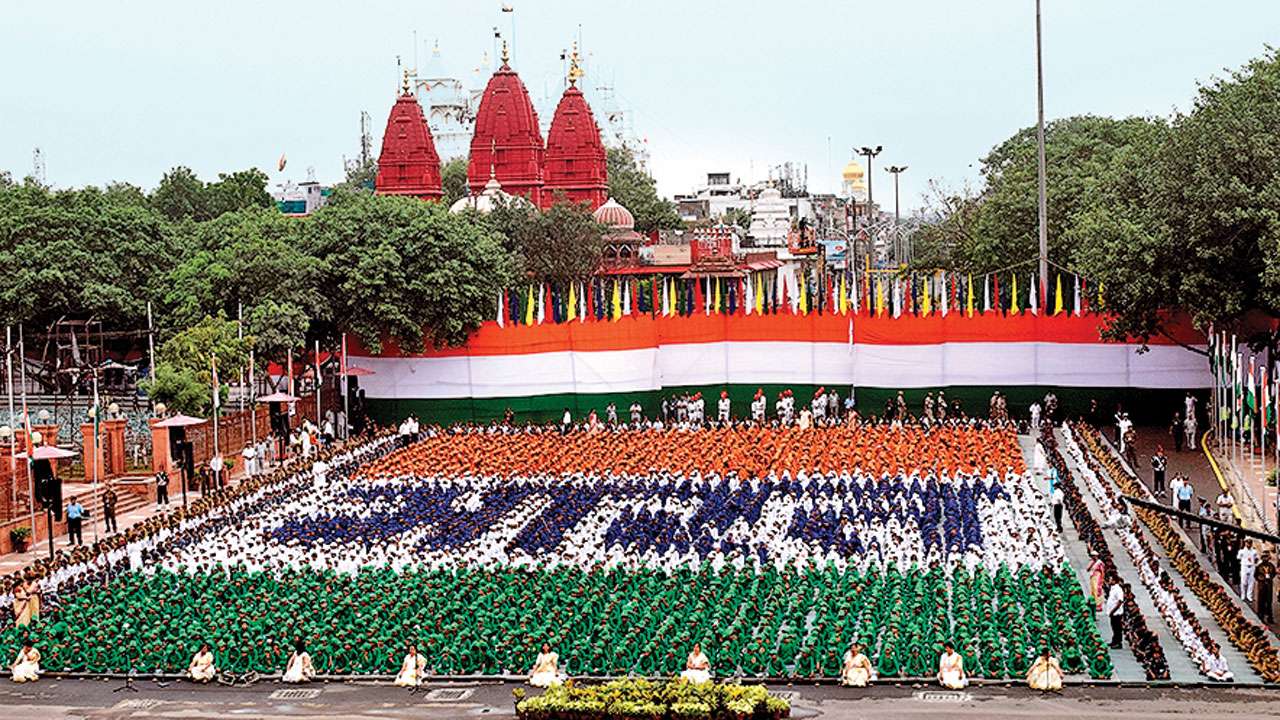‘Hindi Hain Hum’: Why language chauvinism is suicidal
India, especially, has been the home of diverse languages, ethnicities, religions, cultures, cuisines, couture, and so on, from times immemorial

Independence Day celebrations
A distinguished Indian general, who served with the Indian Peace Keeping Force in Sri Lanka, made an astute observation about language politics. Sinhala hyper-nationalists were not aware of the real choice before them when they started imposing Sinhalese in Tamil speaking areas of their country. Tamil speakers in the island nation began to feel like second-class citizens, deprived of equal rights. The authorities should have been advised: “Either you have two languages and one nation or one language and two nations.”
The bloody and long-drawn conflict in Sri Lanka almost proved the above hypothesis. Earlier, the dismembering of Pakistan was also due, in great part, to language politics. Urdu, the native tongue of very few ‘mohajirs’ or immigrants from India, was enforced as the national language on the whole country. The Bangla-speaking citizens in the then East Pakistan, who outnumbered all other language communities, naturally, resented this imposition.
In fact, Urdu, being “no one’s” language, was a camouflage; Punjabi and Sindhi elites ruled Pakistan in the name of Islam and Urdu. The real raison d’être of Pakistan, its supposed binding force, was of course religion, Islam. Pakistan was founded as an Islamic nation-state carved out of the Indian subcontinent. But Islam, apparently, was not glue enough to hold the two halves of the country together. Not only did many million Muslims choose to stay behind in India, but Pakistan got split into two within 25 years of its formation.
Lest we forget, the rupture was brutal and nasty. Pakistan staged a massive invasion of over 100,000 troops into their own twin-territory. They followed it up with a genocidal war waged on their own citizens, accompanied by the worst atrocities and crimes against humanity, including rape, torture, mutilation, and massacre of civilians. There was an exodus of some 10 million refugees to India. The Indian army had to intervene. Assisted by the newly formed Mukti Bahini, they liberated what was soon to be Bangladesh from the clutches of Pakistan. Bangladesh, as an independent country has prospered with a per capita income which today is higher than Pakistan. Bangladesh adopted a Rabindranath Tagore composition, ‘Amar Sonar Bangla’ as their national anthem.
The point, which should be obvious, especially to Hindi/Hindu chauvinists, is that one language — or for that matter one religion — doth not a nation make. India, especially, has been the home of diverse languages, ethnicities, religions, cultures, cuisines, couture, and so on, from times immemorial. This is evidenced in texts as old as the Vedas in their vivid descriptions of this land. India, one can safely assert, has always been characterised by heterogeneity rather than homogeneity. Why try to change that now? Even the three-language formula, which is over fifty-years-old, neither fully tried to nor succeeded in the imposition of Hindi in schools in Tamil Nadu. Primary education is, after all, a state subject. So the brouhaha over the revival of Hindi as the third language in the Draft Education Policy was totally uncalled for; in any case, it was also hastily dropped.
‘Raj Bhasha-wallas,’ with whom every government department must deal, despite their occasionally bullying ways, are also ultimately ineffective, if not harmless. They seem more concerned with the gravy train that comes with pushing ‘sarkari’ Hindi. There’s moolah in it, not to mention statutory Hindi officer jobs in all government and public sector undertakings. Plus prizes dished out in competitions promoting Hindi, observing ‘Hindi Diwas,’ and so on. Yet, if Hindi, in some variety or the other including what used to be called Hindustani, has the third largest number of speakers in the world after Mandarin and English, it is not because of these political pressures.
The fact is that what goes by the name of ‘Hindi’ is a wide basket of affiliated and mostly mutually intelligible mother tongues — close to 100 of them — which are spoken in nearly all parts of the subcontinent. Our standard Hindi, some would say, is one half of a composite language invented in Fort William in Calcutta under the patronage of the British colonial administration. It was based on what is commonly called ‘Khari Boli,’ which I understand not as “stiff or standing,” but as ‘true.’ In other words, ‘straight talk.’ It was the language considered suitable to telling it as it is, communicating clearly without confusion or obfuscation. Native to Delhi and Western UP, this language, with a dual Sanskrit-Persianised vocabulary, soon become popular as India’s ‘national’ language. Later, Mumbai cinema and TV played a huge role in making it an acceptable lingua franca, not only in India but abroad.
Now with an added English vocabulary, it is all set, according to some experts, to be the world’s most understood language. Please let’s not try to make it India’s most misunderstood language.
Author is Director, IIAS, Shimla